Introduction
Foreword
Everyone’s heard of hypersonics. Few understand them. It’s time to fix that.
When the filmmakers behind Top Gun: Maverick set out to capture their blockbuster sequel, they asked themselves a simple question: What’s the most thrilling, boundary-pushing aircraft we could plausibly put on screen?
Their answer wasn’t a stealth drone, sixth-gen fighter, or spaceplane — it was a hypersonic cruiser. In the film’s first moments, Tom Cruise straps into a needle-nosed experimental jet, lights the engines, and punches past Mach 10, right before the “Darkstar” aircraft disintegrates in the upper atmosphere.

Fictional as it was, Darkstar wasn’t pure fantasy. Hollywood chose a hypersonic aircraft because it felt like the edge of what’s possible: exhilarating, credible, and distinctly American. And they got it more right than you’d think: the design bore the fingerprints of real engineering: twin tails, splayed intakes, and a silhouette that echoed past concepts (some built, some shelved).
Most of all, Darkstar felt like the spiritual successor to the SR-71 Blackbird. The Blackbird was real. Developed in the 1960s, the Blackbird cruised above 80,000 feet and topped out at Mach 3.2. It was faster than any missile in service at the time, efficient enough to get faster with altitude, and so audacious that it was unstealthy by design, because nothing could catch it.

Hypersonics picks up where the Blackbird left off: same ambition for speed and survivability, far harsher conditions. The SR-71 didn’t cross the hypersonic threshold (Mach 5+). But the U.S. did, more than 60 years ago. In the early ’60s, we built a crewed, reusable rocketplane (the X-15) that reached Mach 6.7. And a dozen pilots flew it nearly 200 times. Since then, we (the authors of this article) built scramjets that lit (X-43A), engines that cruised (X-51), and glide vehicles that reached operational altitudes.
And yet today, no U.S. hypersonic system is fielded.
The systems in development, here and abroad, are largely uncrewed, disposable, and designed for one-way missions. In practice, the technology tends to manifest itself as maneuverable strike platforms. But the larger idea persists: that speed can collapse distance, outpace defenses, or perhaps one day, make global travel feel nearly instantaneous.
That’s why Top Gun opened with a hypersonic jet. Because it was thrilling, plausible, and recognizably American. Somewhere beneath the vapor trails and visuals, the deeper provocation lingers: If we’ve flown this fast before, why did we stop?
We once made planes too fast to shoot down. Now we make renders.
The country that broke the hypersonic barrier six decades ago, has since built — and then shelved — nearly every major breakthrough since. While our programs started and stalled, our competitors fielded imperfect systems, iterated in public, and pressed ahead.
And today, hypersonics are once again in the headlines: from Chinese DF-27 parades to Russian Kinzhal barrages, and even Iranian and Pakistani claims. Hypersonics are shaping deterrence theory, industrial strategy, and planning across the globe. They compress decision cycles. They blur conventional-nuclear boundaries. They stress the architectures of command, control, and confidence.
But most Americans remain understandably confused. Hypersonics are buried beneath jargon and contradiction: celebrated in movies, misunderstood in briefings, and rarely explained clearly. There’s fascination, but the facts are fuzzy at best.
Still, that fascination endures for a reason. Hypersonics aren’t just a weapons class. They’re an idea: that speed, properly understood and engineered, can collapse distance and reimagine how we move through the world. That vision carries military weight, but also civil, economic, and human promise. The ability to cross the globe in a few hours. To project presence at will. To bring back the ambition of flight as a transformative force.
More importantly, hypersonics represent unfinished business: a frontier we cracked open, but never crossed. We’ve seen firsthand: the physics work, the core technologies are viable, and the opportunity is still on the table.
This antimemo isn’t just about what hypersonics are, or aren’t. It’s about why the idea endures, why the technology matters, and what it will take to finish what we started.
Because for all of the headlines, hype, hand-waving, and hardware boondoggles, the story of hypersonics brings us closer to a deeper question — one of purpose, persistence, and national direction:
Why aren’t we flying faster?
Section 001
Hypersonic is a category, not a capability
A strategy of misunderstanding hypersonics, or ignoring them, is no strategy at all. So, let’s tackle one of the biggest misconceptions head-on: “Hypersonics” is often invoked as if it were a singular technology: a wonder-weapon with one mission, one profile, and one doctrine. That’s wrong, and dangerously so. Technically speaking, “hypersonic” refers to a speed regime: any sustained flight above Mach 5, or five times the speed of sound.
But today, when we talk about hypersonics, we’re referring to speed and maneuverability inside the atmosphere. That’s where things get hard, and the real value emerges.
“Hypersonics” today means hypersonic and maneuverable. It’s not just speed alone
People think hypersonics is one thing. It’s really a spectrum. In terms of platforms, think about this regime as three distinct technological categories:
- Boost-glide weapons: Rocket-boosted, maneuverable vehicles like China’s DF-ZF and the U.S. Navy’s CPS. These systems rely heavily on initial rocket propulsion, followed by glide phases where they execute unpredictable maneuvers.
- Air-breathing cruise missiles: The Hypersonic Air-breathing Weapon Concept (HAWC) and Hypersonic Attack Cruise Missile (HACM) utilize atmospheric oxygen to sustain propulsion, enabling longer ranges and greater mission flexibility.
- Reusable ISR/Aircraft: A small but growing class of concepts that promise rapid global ISR (intelligence, surveillance, & reconnaissance), cargo delivery…or, one day, passenger transport at hypersonic speeds.
These are not interchangeable. They have radically different design constraints, operational timelines, methods, and logistics footprints. Lumping them together has led to doctrinal drift, funding misfires, and procurement stasis. Treating “hypersonics” as one thing ensures we understand none of it.
Why does the confusion matter?
Remember the headlines we mentioned earlier? Here’s an example from last month: “Iran says it fired hypersonic missiles at Israel, after Israel strikes Tehran.” This story refers to Iran’s Fattah-1. Headlines call it hypersonic, and Iran says the missile can reach a speed of Mach 13. In truth, it’s a ballistic missile with a slightly maneuverable warhead (and thus, not a true hypersonic glide vehicle). Same story with Russia’s so-called Oreshnik, which “flies to its target like a meteorite,” as Vladimir Putin has said. The rocket is certainly fast (the Ukrainians clocked it at Mach 11), but once again, it is erroneously conflated with hypersonic glide vehicles. In reality, the Oreshnik follows a ballistic path and lacks the sustained atmospheric maneuverability that would qualify it as a genuine hypersonic weapon.
If you were to really relax your standards, hypersonics are everywhere: every SpaceX launch, every Chinese, Russian, European, or Indian rocket, all hitting Mach 20+ as they leave (or reenter) the atmosphere. These orbital vehicles follow predictable ballistic arcs, not the maneuverable, atmospheric flight that makes modern hypersonic weapons so disruptive. That’s not hypersonic. And if we keep conflating speed with capability, we’ll keep mistaking noise and signals.
Section 002
Speed is a tactic; Maneuverability is the strategy
In a military context, speed by itself isn’t a strategy. You use speed for a battlefield purpose: to make yourself unpredictable, un-interceptable, and, ideally, unkillable.
But speed without control is just a faster version of predictable. The real value is the combination of speed and maneuverability: it’s not just about getting there faster, it’s about getting there unpredictably. That pairing is what makes hypersonic systems survivable in a world saturated with sensors, satellites, and interceptors.
Too often, we confuse peak speed with performance. Many systems can sprint briefly at high Mach numbers, but hypersonics aim to cruise there. Sustained throughput across vast distances, without slowing for airspace or drag penalties, is what makes them tactically potent and strategically disruptive. It’s not just about going fast once. It’s about staying fast the whole way.
Counterintuitive as it may seem, propulsion efficiency actually improves past Mach 4. Most aircraft burn more fuel at higher speeds, but certain hypersonic engines become more efficient the faster they go. That’s why range, often the Achilles’ heel of high-speed flight, can actually extend as you move deeper into the hypersonic regime. With the right propulsion architecture, more speed doesn’t just mean getting there faster: it means going farther, too.
Hypersonics aim to thread a needle: fast enough to compress timelines, agile enough to avoid fixed assumptions about flight paths, and difficult enough to track that defenders must guess rather than calculate. That’s the theory. But achieving it in practice leaves us with an array of tricky technical challenges, and tradeoffs:
- Comms Blackouts: At Mach 5+, atmospheric friction ionizes the air around the vehicle, forming a plasma sheath (electrically charged layer of ions and electrons) that blocks most radio signals. Once a system is “over the fence,” there’s no mid-course update, no retargeting, no operator input. Guidance must be onboard, autonomous, and hardened, both physically and computationally. Workarounds exist in theory, but no system has solved the problem at scale.
- On-the-Fly Navigation: GPS is often denied or degraded at these speeds. So, hypersonics must rely on self-contained inertial systems that can withstand extreme G-forces, vibration, and heat, while still maneuvering unpredictably. Any drift compounds quickly. Knowing exactly where you are, all the way in, is a requirement that’s easy to set, but brutal to meet.
- Terminal Precision: Even if the vehicle makes it close, hitting the target is another matter. Plasma can distort sensor data. High-G turns strain airframes. Final targeting under speed and heat is chaotic, precisely when precision matters most. Survivability and accuracy pull in opposite directions; reconciling the two remains an open frontier.
Cost: Not the unit, but the effect
The common knock on hypersonic systems is cost, and yes, they’re expensive. Specialized materials, precision manufacturing, exotic fuels, extensive testing, and bespoke launch platforms all push unit prices >30% higher than maneuverable ballistic alternatives on a per-unit price. But sticker price misses the point.
What matters is the cost of the effect. If a hypersonic weapon can reliably reach a high-value target that no other system could penetrate (whether due to distance, defenses, or timing), its value lies in the outcome, not the receipt. That calculus includes more than destruction: it includes disruption, deterrence, and delay. One missile that forces an enemy carrier group to reposition, or compels an adversary to invest billions in countermeasures, is doing more than (potentially) attacking — it’s shaping decisions.
There’s also opportunity cost. Programs deferred or delayed in search of perfect solutions often create capability gaps that no retrofit can fix. Strategic relevance is perishable. Choosing to wait can cost more in deterrence credibility than any line item ever could. Time is a currency too, and we’re not the only ones spending it.
Compared to what?
To understand the value of hypersonics, you must compare them to the systems they aim to displace or complement.
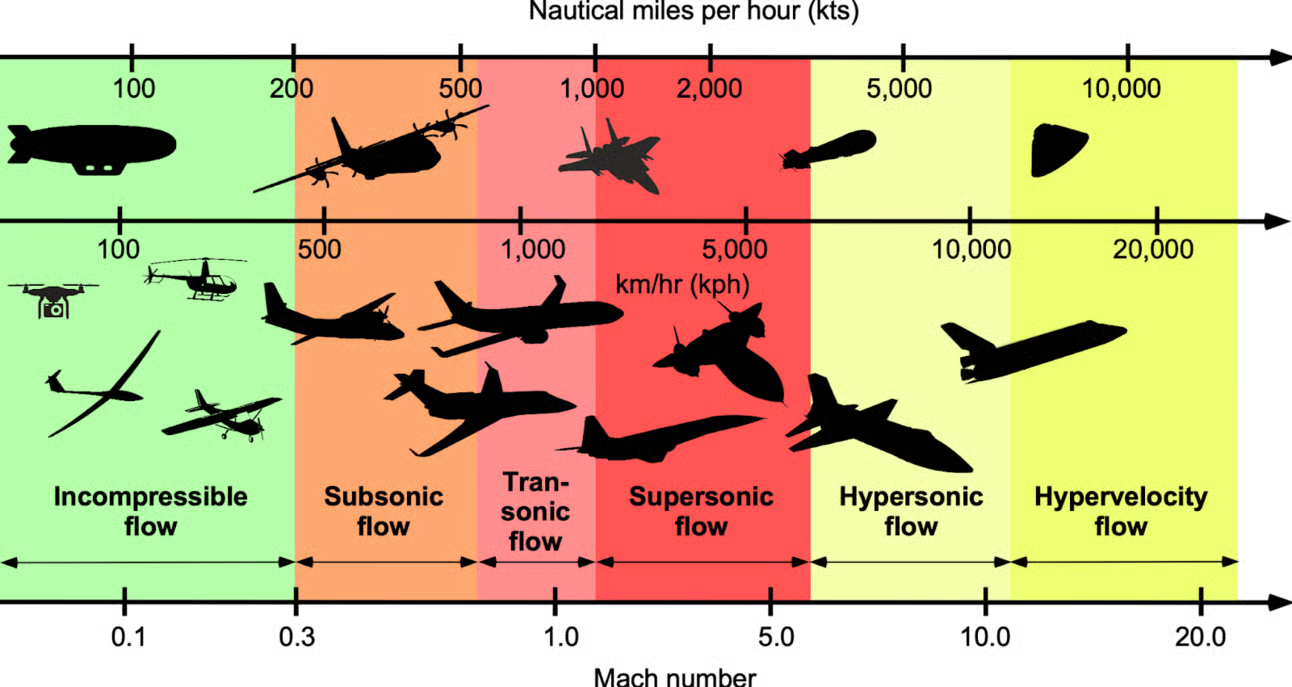
Ballistic missiles are fast and long-range, but follow predictable arcs that make them easier to track and intercept. Cruise missiles can maneuver and fly low to evade radar, but they’re slow, often giving defenders 15 to 20 minutes to respond.
Hypersonic systems are an attempt at the best of both worlds: ballistic speed, with cruise-missile agility. A hypersonic strike might cut the decision window to under 5 minutes. These systems complicate interception and strain defense infrastructure. And while they aren’t inherently better across the board, hypersonics are built for survivability.
The same logic extends to sensing itself. After retiring the SR-71, the U.S. has leaned heavily on satellites for global surveillance, operating under the assumption that the space would remain a sanctuary. This assumption no longer holds: orbits are predictable, pass windows are fixed, and adversaries may now have the means to jam, blind, or destroy our birds. In a peer conflict, satellites are likely to be among the first targets (and first losses). Hypersonic aircraft, by contrast, offer real-time, high-speed ISR with flexible timing and unpredictable flight paths. They’re a way to reintroduce tactical surprise and resilience into a sensing architecture that has grown static and exposed.
And the strategic case isn’t limited to ISR or defense. Civilian aviation faces its own set of speed-induced constraints: supersonic travel promised faster flight, but in practice was throttled by its own limitations: sonic booms that limited overland routes, and high drag at transonic speeds that drained fuel and range. The Concorde could fly at Mach 2, but only over oceans. When you factor in takeoff, subsonic cruising over land, refueling, and layovers, the supersonic airliner’s true advantage over conventional jets shrank dramatically. Hypersonics, by contrast, operate at high altitude where air is thin, drag is lower, and shockwaves dissipate before reaching the ground. In theory, this opens up the possibility of continent-spanning flight without the same regulatory or acoustic tradeoffs.
Of course, these ideas are largely still aspirational. But they underscore the broader point: hypersonics aren’t just fast, they challenge the assumptions baked into how we move, fight, and signal power.
And yet, we’ve been here before. The U.S. has led the world in hypersonic flight not once, but several times over the past half-century, only to walk away before crossing the operational finish line. Whether through shifting priorities, acquisition inertia, or sheer institutional forgetfulness, the pattern has repeated itself again and again.
Section 003
American strategic amnesia, hypersonics edition
“We do not suffer from a lack of breakthroughs. We suffer from the inability to stay with them.”
– Mark Lewis
If a single phrase sums up the U.S. hypersonics journey, it’s this: We proved it, then we walked away. The U.S. has led hypersonic R&D for decades (or, more accurately, we did lead in years past). But too often, the moment validation was achieved, institutional energy dissipated. Projects died, programs stalled, and memory reset.
Start with the X-15, a joint program by NASA and the Air Force in the 1960s. Dropped from the B-52 and powered by a throttleable rocket engine, it flew 199 missions between 1959 and 1968, reaching Mach 6.7 and the edge of space. One flight in 1967 pushed that limit: Maj. Pete Knight piloted the X-15A-2 to 4,520 mph, wearing a pressure suit in a cockpit wrapped in hand-applied ablative coating. Built without digital tools, ceramic composites, or exotic fuel, it made hypersonic flight routine. And then, it was retired.
The pattern, regrettably, is almost ritualistic…
- X-43 (2004): The first flight of a scramjet-powered vehicle, demonstrating net-positive thrust at Mach 9.6. A breakthrough. Then…canceled after two flights.
- X-51 (2013): The first sustained hypersonic cruise, with 210 seconds of powered flight at Mach 5+. Program deemed a success. Then…shelved with no follow-on.
- ARRW (2020s): A promising air-launched boost-glide system with mixed early results, but later test flights exceeding expectations. Declared “complete” and cut, only to be quietly revived in 2025.
The X-43A was our Kitty Hawk moment. We proved that scramjets could ignite and demonstrated the physics of fuel injection and mixing at high speeds. And then we shut it down. The X-51? That was the Lindbergh moment. It showed we could sustain hypersonic cruise for over three minutes using jet fuel and regenerative cooling. We showed the technology was practical, and then we shut that down, too.
These werent’ failures of physics, but failures of follow-through
More precisely, they were the result of a recurring blend of “not invented here” inertia, political-budgetary churn, and lack of sustained strategic ownership. New leadership kills inherited programs. Shifting priorities decouple funding from roadmaps. No one stays long enough, or owns the mission deeply enough, to push proven systems across the finish line. This results in restart after restart, with little institutional continuity and zero programmatic muscle memory.
“The challenging dynamics within government and primes are forcing a younger generation to leapfrog legacy capabilities.”
– Jeff Crusey
A tale of two trajectories
- China: Fields and parades the DF-ZF hypersonic glide vehicle as early as 2019. Evidence suggests the DF-27, another family member, is operational and integrated into doctrine.
- America: Deserts programs at the moment of transition, rewarding novelty over delivery. Operational experience is replaced with permanent R&D.
The United States has several hypersonic weapons programs in advanced development: ARRW (USAF, air-launched boost-glide), HACM (USAF, scramjet cruise), LRHW (Army, ground-launched boost-glide), and CPS (Navy, sea-launched boost-glide. ARRW was recently revived; HACM is advancing towards fielding (expected in ~2027); LRHW and CPS have completed end-to-end tests but are not yet operational. Other efforts, like DARPA’s OpFires and the Navy’s recently canceled HALO program, represent narrower testbeds or exploratory paths. While funding has increased significantly, U.S. programs remain in the prototype-to-preproduction phase, with operational timelines trailing those of China and Russia. No U.S. hypersonic system is fielded to date.
China has operationalized its DF-ZF glide vehicle since at least 2019, and has followed it with a growing portfolio: the DF-17, designed for regional targets; the DF-27, reportedly capable of reaching Guam or beyond; and experimental platforms that hint at fractional orbital glide systems. These are not speculative. They’re deployed, integrated into force planning, and increasingly visible in satellite and test telemetry.
Russia, for all its internal dysfunction, has developed and fielded multiple hypersonic systems, including the Avangard glide vehicle and Tsirkon cruise missile. (Russia also claims its Kinzhal missile is hypersonic, but Ukraine has intercepted it with the American-made Patriot missile defense system). So, Russian systems’ performance may be middling, but their utility is real: they’re fielded and integrated into force structure. Deployed systems reveal gaps, generate doctrine, and force adversaries to respond. China and Russia are learning by doing, gaining not just technology, but timing, infrastructure, and experience under operational constraints.
Where that leaves us
The contrast couldn’t be sharper. The United States proves concepts, then shelves them. China and Russia field imperfect systems, gather real-world data, and evolve their doctrine in public. They are building with intent. We are building and walking away.
The missing ingredient is persistence. Programs rise and fall with budget cycles and leadership turnover.
And persistence matters. The hardest problems in hypersonics are not political: they’re physical. Mastery demands not just funding but persistence across all fronts: friction, heat, shock plasma, signal loss, guidance. These are thresholds that we must cross with time, talent, and repetition. Mastery comes from being willing to pay down the cost of complexity. That’s what makes the next chapter so critical.
Section 004
Understand the laws before you design against them
Hypersonics doesn’t bend to willpower. It doesn’t scale on enthusiasm. It doesn’t care about politics, or funding cycles, or startup optimism. It answers only to physics. And those rules are not negotiable.
“Are you trying to violate the laws of physics? You get one violation. Two, and you’re done.”
– Mark Lewis
Inside the Beltway, and between government, industry, and media, much of the conversation around hypersonics is blind to the laws of physics. We overpromise, underbuild, and assume reality will make room. It won’t. If we’re serious about fielding high-speed systems at scale, we need to start by grappling with the hardest parts head-on.
These are core technical constraints (many known for decades, most still unresolved)
Thermal protection systems (TPS): At speeds above Mach 6, the thermal load is unforgiving (just ask Tom Cruise’s Maverick character). Most metals and composites burn through or deform within seconds. Surviving hypersonic flight, let alone doing so repeatedly, requires ultra-high-temperature ceramics (UHTCs), engineered ablatives, or other exotic, advanced materials that remain largely trapped in laboratory-scale development. Reusability (e.g., ISR or transportation systems) only raises the bar. You can’t just burn off a $4M heat shield and fly again next week. Sustaining operations at scale demands materials that can survive heat, shock, erosion, and storage, and be repaired, refitted, and re-used without months in a cleanroom. No such system is field-ready. And without it, sustainment and readiness fall apart.
Manufacturing bottlenecks: Additive manufacturing enables novel engine geometries and aeroshells, but these techniques have a throughput problem. They can’t scale beyond prototyping. There is no “print and fly” model nor viable production line for full aeroshells, complex propulsion geometries, or high-temperature structural elements. Even basic components often require skilled post-processing and finishing by hand. And, unfortunately for us, producing one-off vehicles for testing is not the same as building dozens per month for operational deployment. There is no public plan for building 100+ flightworthy airframes on short timelines. Until that changes, production will remain a key chokepoint.
Fragile and narrow supply chains: Hypersonic systems depend on rare and exotic materials: hafnium, niobium, specialty ceramics, and temperature-stable alloys. Many face chronic sourcing risk, as they come from unstable regions or adversarial regions, and we have little to no domestic redundancy or surge capacity. Any shift from prototyping to scale stresses a supply base that doesn’t yet exist. Furthermore, increased demand imposed by reusability and/or higher sortie rates compound the problem further. Even if we perfect the TPS itself, we still lack the upstream industrial base to feed it. Wartime scenarios would break the current system immediately.
Modeling, simulation, and test infrastructure: Hypersonics lives or dies in test. To accelerate timelines and de-risk design, modeling must become foundational. Modern simulation tools allow us to simulate flight profiles, thermal loads, shock environments, and materials performance in silico, long before metal is cut. But these are only useful if they’re paired with real data, and funded early. This requires high-cadence flight test campaigns, not one-off “demo milestones.” It also demands investment in digital twin architectures, agile design pipelines, and commercial testbeds that can generate flight-relevant data on industrial timelines.
Propulsion architecture: Scramjets have become the de facto center of gravity for hypersonic propulsion, but their limitations are well-known. They are fragile, narrow-band, and notoriously difficult to integrate with reusable or multi-mission platforms. Other propulsion classes are worth looking at: rotating detonation engines (RDEs), combined-cycle systems, and precooled-cycle engines, like the SABRE concept from Reaction Engines. Companies such as Venus Aerospace are at the forefront of this push, developing RDE-powered platforms designed for ultra-high-speed, point-to-point travel. These systems impose different tradeoffs in efficiency, thermal management, and mixed-regime performance. None are ready for mass production, but each opens design space that scramjets alone cannot cover. If we want to expand mission profiles, we need to treat propulsion not as a solved problem, but as a live frontier.
If we’re serious, the next phase will be defined not by pitch decks, press releases, or “artist renders,” but by how many flight hours we accumulate solving the same hard problems again and again, until the physics says yes. What comes next isn’t conceptual; it is industrial and procedural. It demands engineering discipline, infrastructure that’s built to fail forward, and teams that stay intact long enough to solve what they started. This is what serious looks like.
Section 005
What serious looks like
Serious means breaking the pattern (of one-off prototypes, of orphaned programs, of disconnected technology bets) and replacing it with continuity, cadence, and consequence.
But hypersonics aren’t just about weapons. The same technologies that can change the opening minutes of a conflict might also shrink the planet, enabling global business or high-value cargo transport in hours, not days.
The Orient Express
Dan Goldin, one of this essay’s coauthors, vividly remembers when this kind of future felt within reach: “In 1986, I watched President Reagan stand up and tell the world in his State of the Union Address: We’re going to build a plane that takes off from Dulles and lands in Tokyo in two hours. That was the National Aerospace Plane (or NASP). The speech and vision captured my imagination.”

When I (Dan speaking) was sworn in as NASA administrator on April 1, 1992, I was determined to make President Reagan’s vision a reality and become the father of the “Orient Express.” The goal was breathtaking: a single-stage-to-orbit vehicle that could scoop oxygen from the atmosphere, cruise at hypersonic speeds, and transform global travel.
But when I sat down for the first time with the NASA and Air Force teams, I asked two simple questions:
- What temperature does the wing’s leading edge reach at those speeds?
- And what material do we have that can survive it?
The answers were vague. The best they had was a theoretical, as-yet-undiscovered material – something that I called “Unobtainium.” I asked a third question: Where does flow separation occur on the wing? I couldn’t get a straight answer. It turned out the engineering didn’t match the ambition.
The vision wasn’t the problem; Reagan was right to push for bold innovation. But the program had outrun its technical foundation. I went to the President and recommended we cancel NASP.
And we did.
But we didn’t stop. Instead, we built the X-43A. We kept the team lean, used commercial components, and focused on what mattered: results. I told my brilliant and scrappy team: “don’t ask for 10 years or $1 billion. Just build three planes, fly them fast, and learn.”
And for about half a billion dollars, we flew the fastest air-breathing vehicle in history. That record still stands, 21 years later.
It wasn’t about budget. It was about clarity, urgency, and not lying to ourselves.
That’s what seriousness looked like. So, what would it look like now?
How do we get serious again?
Here are six directives from the authors of this piece: engineers, leaders, and strategists who’ve built hypersonic systems, watched them get shelved, and are ready to help finish the job.
Build a dual ecosystem: defense and commercial.
Whether for cargo or crew, commercial hypersonics programs aren’t just curiosities. They can help sustain the same suppliers, test infrastructure, and engineering talent that military programs rely on.
And the private markets are starting to take it seriously: we’ve seen early-stage capital flow into point-to-point delivery, long-haul transport, and supporting infrastructure.
- Diversify propulsion, and bet beyond the scramjet.
- Scramjets (mature but narrow), RDEs (promising but early), and emergent hybrids all have distinct use cases.
- Relying solely on scramjets is a recipe for obsolescence. Funding must flow into disruptive, not just incremental, propulsion architectures.
- Industrialize TPS: make it affordable, repairable, and routine.
- Scale production of ultra-high temperature ceramics, ceramic matrix composites, and ablative systems.
- Emphasize not just peak performance but industrial repairability and sustainment; no single-use material theater.
- Fix additive techniques’ throughput problem.
- Invest massively in the mechanical, process, and robotics infrastructure to move additive manufacturing from lab curiosities to scalable, wartime-grade factories.
- Rate production (not demo flights) should be the metric of success.
- Fund flight-relevant testbeds from novelty to normalcy. These testbeds should be the proving grounds for operational reliability, supply chains, and manufacturing cadence.
- Design around blackout.
- ISR, comms, and C2 systems must be designed to operate within the blackout envelope.
- There can be no hand-waving around plasma blindness; solutions must be real, fieldable, and bulletproof at scale.
- Accordingly, sensor fusion, autonomy, and “smart” inertial guidance must be designed in, not bolted on.
- Similarly, autonomous onboard guidance (not just navigation) must be robust enough to make decisions mid-flight without OTA updates.
Parting Thoughts…
America’s hypersonic journey has been a saga of inspiration, abandonment, and at times, strategic amnesia. We have engineered not one but several revolutions in Mach 5+ flight, only to then fly them into program death spirals and bureaucratic “next big things.”
As others iterate, integrate, and operationalize, every month lost to dithering is a gift to adversaries setting new goalposts. The path from prototype to fielded tool is brutal and friction-filled. We don’t need to add red tape to physics.
Failing to deliver operational, sustainable hypersonics is not a “nice to have.” It’s an open invitation to strategic surprise: a vulnerability we simply cannot indulge. The way forward runs through physics, friction, and focused action. And as always: the only out is through.
